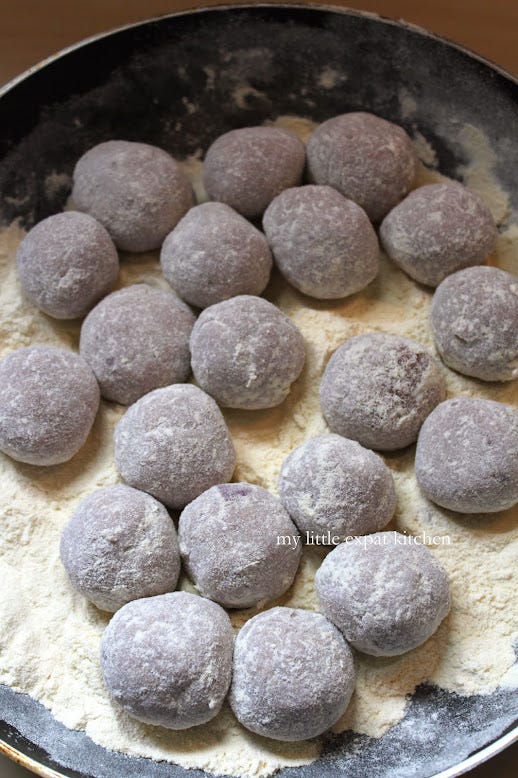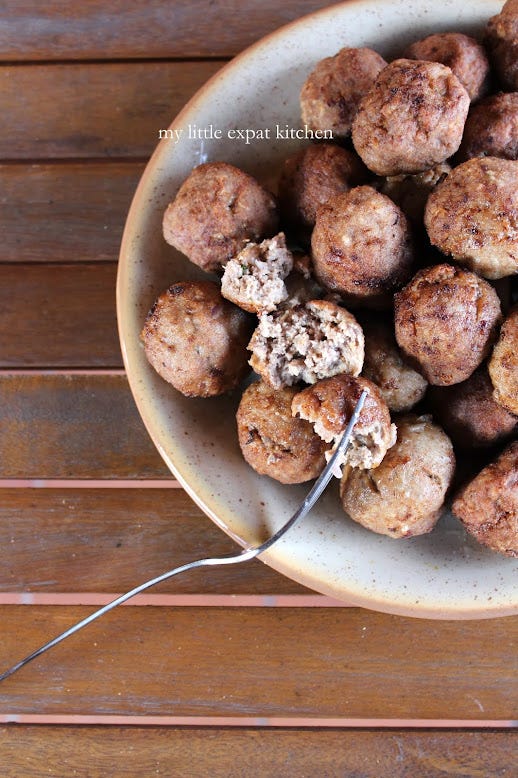Published originally on my blog on 24 November 2013
On the way home from a day at the beach, food was all we could think of. The sensation of hunger after swimming in the open, blue, Aegean Sea can be quite strong.
I knew I was the one who would prepare our lunch, and the moment when I’d sit down to the table and enjoy the fruit of my labor seemed very distant.
We had picked up everything we needed from the market. Minced veal, onions, dried mint, and luckily there was some stale bread leftover from the previous day to soak and use for my keftedakia (meatballs). I put all the ingredients into a large bowl along with lots of salt and pepper and started mixing everything with my hands that still smelled of the sea.
I had been kneading the mixture for a long time while a pleasant, cool breeze coming from the kitchen window was caressing my face, and when my hands started feeling tired from the repetitive motion and my thoughts stopped wandering and had now focused on the image of freshly fried meatballs, I reached for the flour.
Oh no, where’s the flour? Don’t we have any? Now what? I can’t make keftedakia without flour. Oh no.
And then it hit me. The best part about being in a small Greek village is the neighbors. Mrs. Katerina was living in the house down the hill and fortunately she was willing to help me. She welcomed me into her home and into her kitchen, and as she lifted the huge sack of flour from the floor and onto a wooden table she said:
“How much do you need?”
“Not much. Here, I brought this small bowl with me. I’m making keftedakia”.
“You can have as much as you want. We have plenty of flour. We all make our own bread every week around here, not like you Athenians”, she said as she sieved the flour.
If only she knew how much I love making my own bread.
I didn’t reply. I didn’t want to crush her image of busy Athenians eating super-market bread in their tiny apartments.
Thanks to her generosity, I left her kitchen with more flour than I needed, went home and immediately started flouring my small, round keftedakia. When the oil started shimmering and the keftedakia took their first plunge in it, they swiftly started to sizzle and soon after they took on a golden brown color.
The table was set, the freshly cut potatoes were fried, the horiatiki salad was prepared with big, juicy, red tomatoes and the best tasting feta I’ve had in a long time, the bread from the village bakery was sliced, ready to be dunked into the rich, fruity olive oil, the beers were ice cold straight from the fridge and we all sat down to enjoy our much anticipated meal, hungrier than ever.
All this transpired a little over two months ago in North Euvoia, in Greece, and yet it feels like it was eons ago. This simple meal, this typical Greek fare, is an integral part of my memories from my vacation there, and these images will forever remind me of the kindness of my neighbor, the distinct smell of the sea and mountains, the keftedakia which even though I had made hundreds of times before, this will perhaps be the only one I will forever remember.
Keftedakia - Greek fried meatballs
Keftedaki (plural: keftedakia) means small meatball in Greek. Keftes (plural: keftedes) is a larger meatball.
In Greek homes this is perhaps the simplest, easiest type of meat dish and nibble that you’ll find.
There are many combinations of flavors that can go into a Greek fried meatball, starting with the kind of meat used (veal, pork, lamb, beef-not as widely used in Greece because we prefer veal), the spices and aromatics used, etc.
My version here gives you the quintessential keftedakia, the most typical, simple and delicious version of keftedakia you can have. For meat recipes like these, where the list of ingredients is short and sweet, the quality of the meat you use is super important, so make sure you buy your meat from a trusted source.









